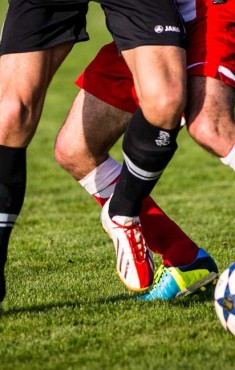Foreword from Ertheo
Peak Performance: Elevate Your Game, Avoid Burnout, and Thrive with the New Science of Success teaches athletes how to perform their best and maintain their best performance without getting tired and burning out.
We thought the book was perfect for parents of young athletes who want to help their children achieve their goals. That’s why we read the book and extracted the most important information for you so you can help your child achieve their goals without having to read the full book yourself.
First, we’ll introduce the topic. We’ll talk about what peak performance is and why it’s important. Then, we’ll present the authors’ plan for athletic success in three parts. Finally, at the end of each part, we’ll share our own advice and recommendations with you.
We hope you’re inspired by what you learn so you can continue to help your child pursue their dreams.
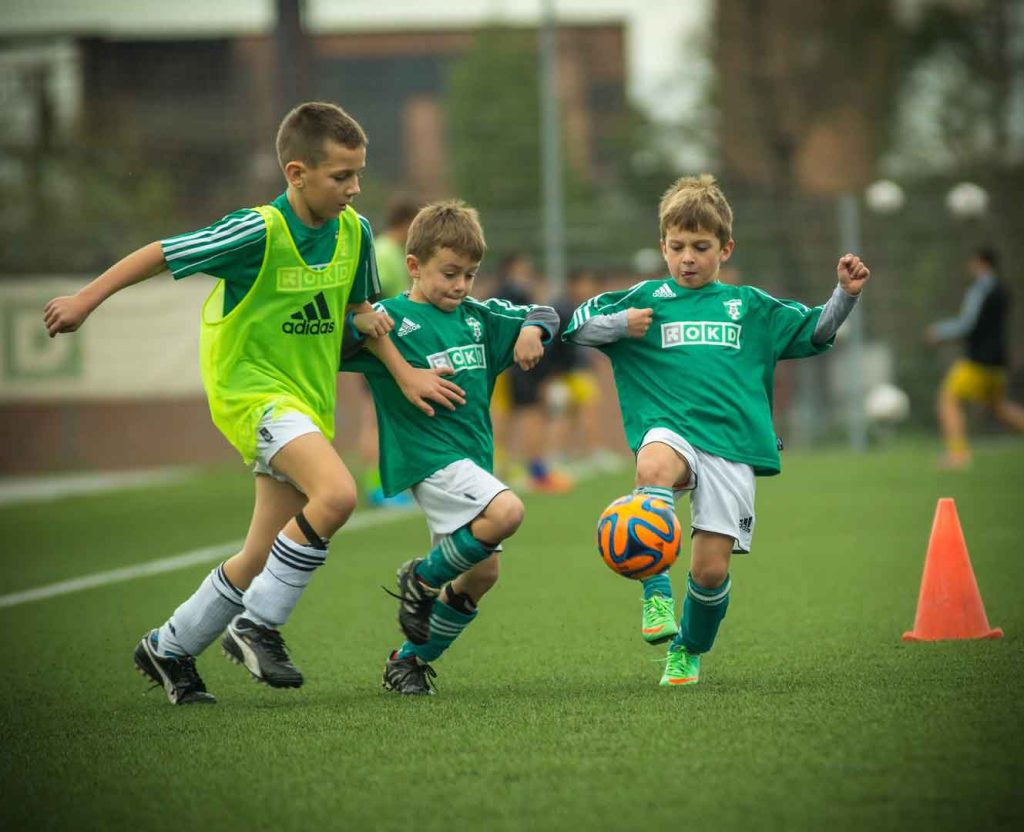
Meet the authors
Brad Stulberg is an expert on health and human performance. Not only does he research, write, and speak about the topic, but he also takes on personal clients ranging from athletes to entrepreneurs. He helps his clients reach their goals by improving their mental skills and overall wellbeing. In addition, he’s written for The New York Times, New York Magazine, Sports Illustrated, Wired, Forbes and The Los Angeles Times. He’s also currently a columnist for Outside Magazine. Stulberg is an avid athlete, loves the outdoors, and enjoys spending time with his wife, son, and two cats. They live in Northern California.
Steve Magness coaches some of the best distance runners in the world. In fact, many of his athletes have made it to the top 15 at the World Championships and the Olympic Games. He also currently coaches at the University of Houston. But Magness is known for more than just his success as a coach. He’s an expert on the integration of science and practice. In 2014, he wrote his first book titled, The Science of Running, and he’s been featured in Runner’s World, The New York Times, The New Yorker, The BBC, The Wall Street Journal, and ESPN The Magazine. Magness ran a 4:01 mile in High School. He currently lives in Houston, TX.
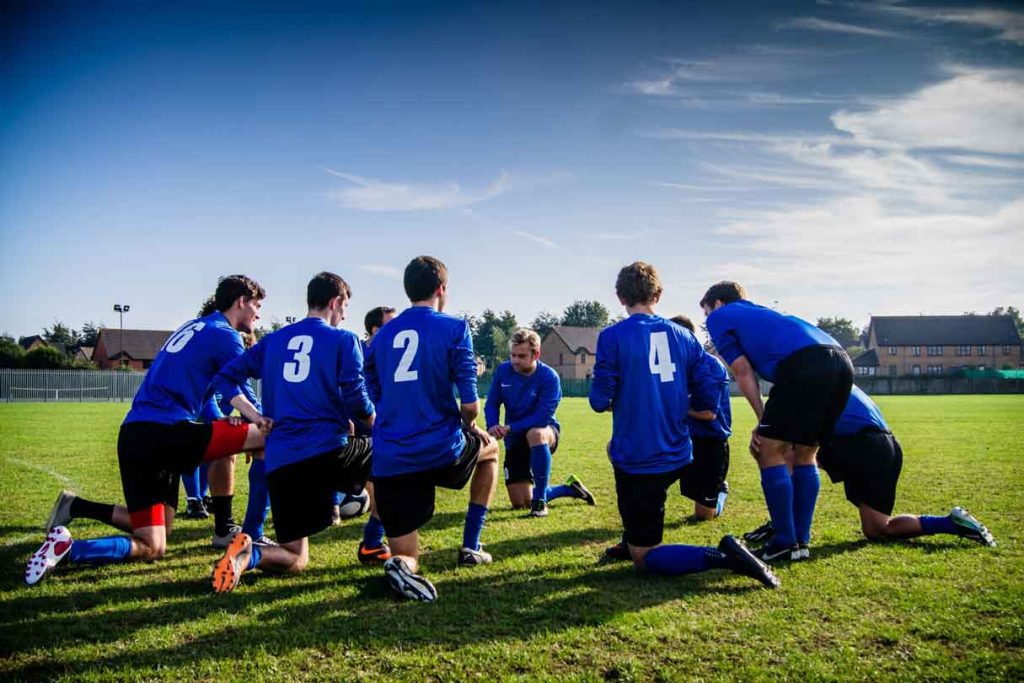
Introduction to Peak Performance
Peak Performance: Elevate Your Game, Avoid Burnout, and Thrive with the New Science of Success is about how athletes can perform their best in their sport as well as in other areas of their life including work, studies, relationships, etc. Another major theme is the role of the athlete’s mind in achieving their goals and how they can condition their mind to help them achieve success.
It’s important to note that peak performance isn’t about winning, and it isn’t about your child being better than anyone else. It’s about your child becoming their best self. But, is winning not enough? Why is become their best self so important?
Winning isn’t enough anymore because they’re no longer competing against amateurs and novices. Competition around the world has advanced to such a level where success requires much more than it used to. To experience real success in any field, they can’t just be better than those around them. They’ve got to be the absolute best they can be.
Even when they’re at the top, they’ve got to keep improving because the rest are catching up, and catching up isn’t just a result of the practice makes perfect principle anymore. Catching up is highly influenced by economic and technological advancements as well. In fact, as countries experience economic improvement, they start producing greater athletes. As long as we’re making progress as humans, competition is only going to get tougher.
So, what can you do to make sure your child is on the path to success?
Peak performance is about finding a way to help your child become their best self by using the resources available to them. It’s about you helping your child maximize their potential.
After extensive research and interviews with peak performers from many different fields, Stulberg and Magness have come up with three essential components of peak performance to help athletes reach their full potential:
- The Growth Equation – Why relaxation and a healthy dose of distraction is good for growth
- Priming – How priming and routines can help them perform their best
- Purpose – Finding and setting a purpose that can help them reach their goals
Let’s take a look at what they found out.
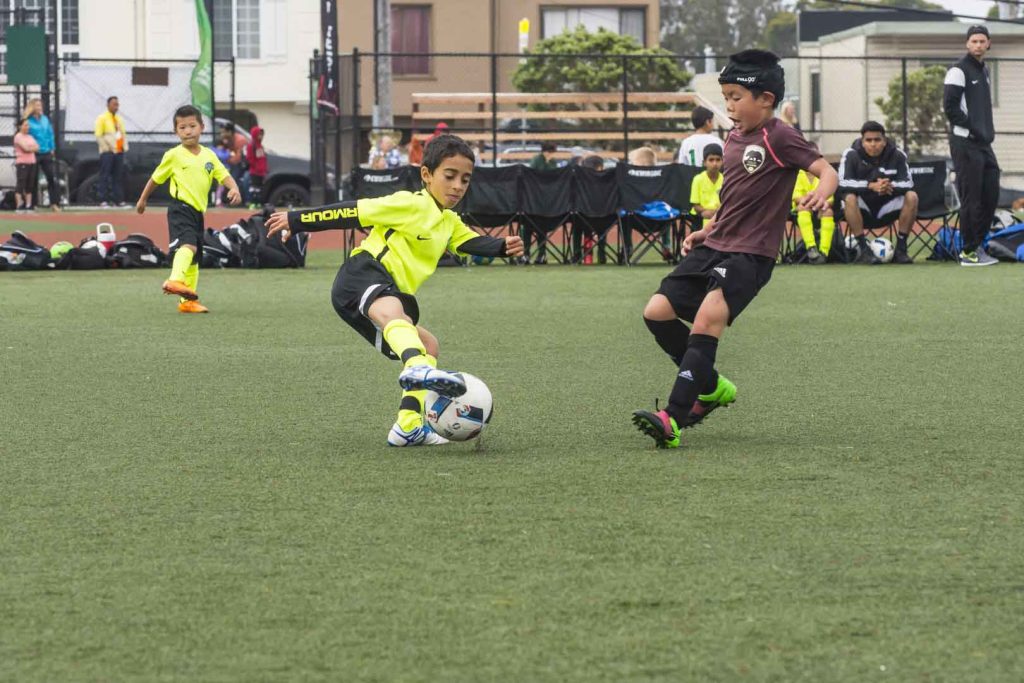
Part 1: The growth equation
The first part of the book is about growing as an athlete and, in general, growing to achieve peak performance in life.
As Stulberg and Magness researched the topic, one of their biggest concerns was how athletes can maintain a high level of intensity hard work without pushing themselves to the limit and eventually burning out or hating the sport or activity.
Through their research, they found that growth as an athlete and growth in all other aspects of life can be achieved using a similar growth equation:
Train extremely hard –> Rest and recovery –> Leads to insights and growth
To reach peak performance without burning out, athletes need to train extremely hard, and then, when the time is right, give themselves ample time to rest and recover. It’s during the rest and recovery period when they really start to process and adjust to all that they’ve learned. Only once they’ve adjusted to their new capabilities or a new sense of self, can they make more room for more growth and change.
Similarly, Stulberg and Magness found that fatigue in other areas of life (e.g. mental or emotional fatigue) can negatively impact sports performance and vice versa. When an athlete is mentally drained or burned out, it’s more difficult for them to perform in their sport. Likewise, when they’re feeling burned out in their sport, it’s more difficult for them to perform mentally.
This idea is particularly dangerous for student-athletes. If they burn out in their sport, their grades could start to suffer. If they burn out in school, they could simultaneously lose interest in their sport. That’s why it’s important to apply the growth equation to both athletics and academics.
For sports, when student-athletes start experiencing symptoms of burnout, it’s a good idea for them to train lightly or take a break from practicing for a few days. According to the growth equation, taking a break won’t stop their progress. Rather, it’ll speed up their progress when they get back to training at an intense level.
Likewise, for academics, when students start experiencing mental fatigue, it’s a good idea for them to step away from the problem they’re trying to solve. By going for a walk or even taking a quick nap, they can give their mind the rest and recovery it needs to return to the problem with a new, insightful perspective.
Rest and recovery is a crucial factor in the growth equation, but so is stress. That’s what the growth equation is all about – finding the balance between the many variables that lead to growth. One such variable is experience or hours spent practicing. Let’s see what Stulberg and Magness have to say about the experience.
The role of experience
Experience, or how long a student-athlete has practiced a sport or subject, is another factor that influences peak performance.
For many years, the amount of time they spend practicing has been considered one of the most important factors to determining their success. For example, you might be familiar with the 10,000-hour rule which states that 10,000 hours of practice can make anyone an expert in whatever their practice.
Current studies, however, have shown that time spent practicing isn’t really that important. What’s really important is how they practice. Fewer hours of focused, concentrated practice are much more beneficial than 10,000 hours of careless, thoughtless practice. In fact, many hours of careless practice can actually cause athletes to perform worse.
Practice only makes perfect with perfect practice. So, what is perfect practice?
What is perfect practice?
Perfect practice is practicing with full concentration and effort, completely free of distraction.
One of the best ways for athletes, or anyone, to make sure their practice is perfect is to set goals that are only possible to achieve with 100% effort and attention. When athletes set goals for themselves, they should try to find a balance between their personal skill level and the challenge level of their goal. That way, when they practice, they’ll practice with all of their attention and effort.
It’s important for athletes to be smart about the goals they set for themselves. Easy goals don’t require enough concentration and effort, and difficult goals can be dangerous for the psyche and the body.
It’s also important for athletes to commit to their goals once they set them. If the goal requires 100% of their effort and attention, they should give that goal 100% of their attention. Anything less than 100% could be dangerous and lead to injury.
Full concentration means no distractions and no multitasking. Many people like to multitask or consider themselves good multitaskers. But, research shows that we learn more and perform better when we focus all our attention on one single task rather than bits of our attention on multiple tasks. To top it off, most people overestimate their ability to multitask. Actually, less than 1% of the population can effectively do it. When working to achieve a goal that requires 100% attention and effort, multitasking should be out of the question.
Distractions are another major limiting factor that can stunt growth. Cell phones are perhaps the worst distraction. Studies have shown that athletes or students can be distracted just knowing that their phone is nearby. If they really want to take their practice seriously, they should put the phone somewhere out of reach and out of sight.
Finally, let’s talk about why this perfect balance between challenge and ability is so important. Challenge causes stress, and stress is another critical variable in the growth equation.
Rethinking Stress
Why do athletes need the stress? What’s the role of stress in the growth equation?
Stress is quite common. Stress is the feeling of emotional or physical tension that we experience when we exert ourselves either mentally or physically. It’s our mind and body’s way of telling us that we’re are not strong enough, or not ready, to handle our current situation.
Student-athletes experience a great deal of stress. They might experience physical stress when they’re working out and they’re too tired to finish a rep or when they’re trying to solve a difficult math problem and can’t figure it out.
Stress is often a frustrating or overwhelming feeling, but it’s exactly what sets us into growth-mode. When we’re stressed, our bodies and minds react by getting ready to grow and adapt to the new situation. So, when athletes push themselves with challenging goals, their bodies and minds have to adjust to the challenge and grow in order to accomplish it.
Interestingly enough, growth happens during the rest and recovery phase. Let’s take a look at the importance of rest.
The Paradox of Rest:
The final variable in the growth equation is the rest. Rest can refer to both quality sleep and mental/physical relaxation when awake, and both types of rest are important for growth (see also our article How much sleep does youth athletes need).
Let’s talk about sleep first, and the importance of sleep for student-athletes. Most obviously, sleep restores their energy so they can continue to train or study at maximum intensity. But sleep also supports all their brain functions that contribute to working memory, long-term memory, problem-solving skills, and even creativity.
So, if a student-athlete wants to achieve peak performance, they’ve got to get good at sleeping.
Here are some tips for student-athletes:
- Aim for 7-9 hours of sleep (for top athletes, up to 10-11 hours have shown to be beneficial)
- Try to follow the natural light rhythm (don’t go to bed too late)
- Don’t watch TV or any screen 1-2 hours before sleep
- Don’t train hard or engage in intensive mental activity 2-3 hours before sleep
- Sleep in a place that is completely dark
- Don’t drink any caffeine/energy drink 6 hours before sleep
- Don’t have any screens (mobile phone, laptops, etc in the bedroom)
While rest refers to quality sleep, relaxation refers to the ability to “turn off” or take a break from thinking about the activity, task, or problem. About 40% of creative breakthroughs arise during a relaxed state.
Here are some ideas:
- Go for a walk
- Take a shower
- Go outside
- Attend a social event
- Take at least one full day off (no training) each week
- Take 2 – 6 weeks off each year
- Meditate
Meditation is an especially good way to learn how to turn off. Studies show that people who meditate react better to stress and take less time to overcome it. As we’ve discussed, stress is essential for growth but so is taking the time to recover from it. Meditation can be a great tool for student-athletes to be able to handle more stress (both mentally and physically) and to be able to recover more quickly. That way they can also get back to learning.
Many kinds of mindfulness meditation techniques can help student-athletes achieve a meditative state. Elite athletes might not even need to practice meditation to be able to experience it. Many athletes are able to get into meditational states just by relaxing after a hard work out. The quicker they can relax, the more likely they are to experience all the benefits of meditation.
Have you recognized the paradox? If they want to achieve peak performance, average rest and recovery won’t be enough. They’ve got to get really good at resting.
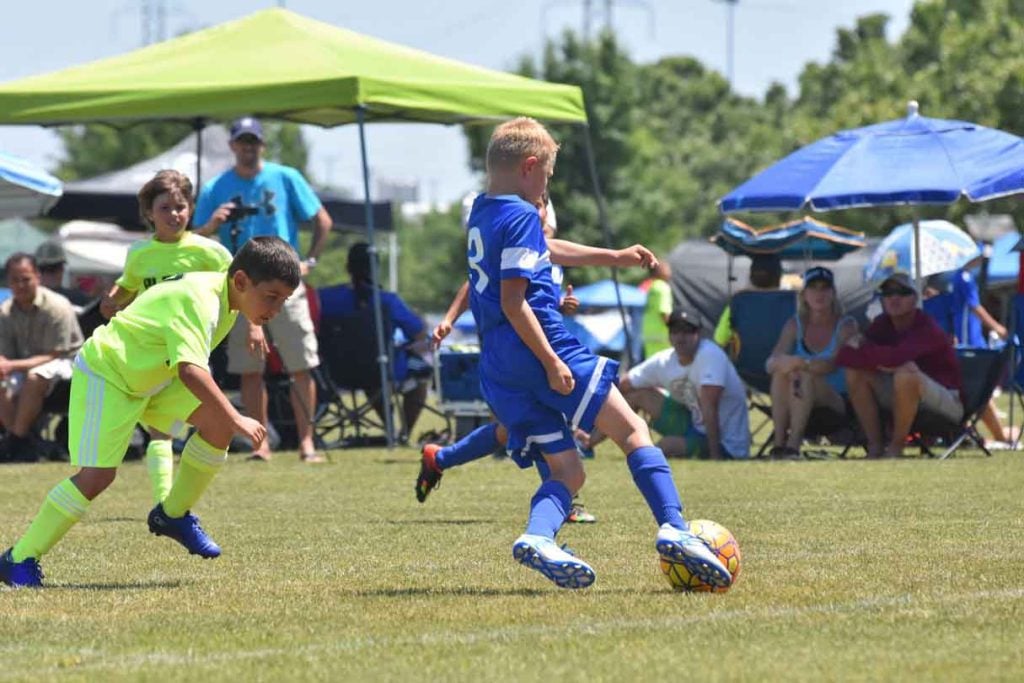
Applying the growth equation to your child
Special recommendations from Ertheo
According to the authors of Peak Performance, Stulberg and Magness, this is the growth equation:
Train extremely hard –> Rest and recovery –> Leads to insights and growth
It’s not particularly easy to apply the growth equation directly to young athletes. Parents of high-performance athletes are faced with the difficult challenge of supporting their child’s academic, athletic, and physical growth all at the same time.
One of the best ways you can support your child’s success is by helping them find the right balance between training intensely, studying hard, and resting. When children experience a lack of balance or feel burned out in one or more areas, it’s easy for them to lose focus and start underperforming at school or practice. They might even lose interest in their sport entirely and decide to quit, a decision they’re likely to regret in the future.
So, finding a balance comes first. How can we motivate our children to continue to succeed both athletically and academically? The ideas in this book can help give us some insight.
Using sports as motivation for academic performance
Not all children are naturally motivated to perform well in school. Many children are very motivated to succeed in their sport, however. Fortunately, there’s a lot of overlap between the two categories. That is, many students who aren’t motivated to perform in school are very motivated to perform in their sport. For these students, sports can be a great way to motivate them to perform better academically.
Many schools do use sport as academic motivation, especially in the United States where sports are fully integrated into the academic system. If a student doesn’t perform well in the classroom, they’re not allowed to participate in sports competitions. The same is true for high-performance soccer academies. If a student doesn’t perform academically, they aren’t allowed to continue training until they improve their scores.
Unfortunately, not all schools are so sport-focused, and so not all schools can implement these rules to motivate student-athletes to perform in the classroom. As parents, however, you can personally implement these same rules for your child. If they’re passionate about improving in their sport, they’ll certainly take school more seriously to be able to continue their training.
You could also consider sending your child to a school that does integrate sports training into their curriculum. High-performance academies are residential sports schools for elite student-athletes that are designed to prepare them to compete at a collegiate, semi-professional, and professional level. These academies often use sport as a means to motivate the students to perform well in the classroom.
The importance of getting the right training
As a parent, one of the main areas where you can have an impact on your child’s success as an athlete is in finding them the right training. The right training not only means a coach who knows the game, knows how to improve, and wants the best for their athletes. The right training also means a coach who knows the system and has the right connections to help them get the opportunities they deserve.
A coach can train a player to be the best player they’ve ever seen. But, at the end of the day, if they aren’t seen or noticed by the right people, they won’t be successful. That’s why the right training with coaches who know the system and have the right connections is so important.
For some lucky children, the right training might just so happen to be local coaching. Local coaches could have the know-how to open all kinds of doors for their athletes. But, most of the time, parents actually have to go out of their way to find the right training for their children.
So how do you find the right training for your child to guarantee that they’ll have their best chance at success? One option is to research different clubs and coaches to find out whether any of their players have become successful. This might mean moving to another city or location so your child can train with a successful club or coach.
Understandably, many families don’t want to move or don’t have the opportunity or resources to move. So, they send their children to high-performance academies where they can live, study, and train all-year-round.
High-performance academies are great options for talented and focused young athletes. Students at high-performance academies usually compete with and against some of the best young talents in the world, which means they have the opportunity to improve a lot.
But, once again, not all high-performance academies ensure the same opportunities for their students. Many have qualified coaches with great connections and, thus, produce successful athletes. Others are not as qualified and connected. Thorough research is the key.
One of the best things you can do for your child is to find them the right coaches and training. The best way to do that is by researching which clubs and academies have the know-how, the connections, and the success stories to prove they can help your child become successful.
What you can do to optimize their training
Having the right training and coaches is one of the most important factors for an athlete’s success. But even with the right training, athletes should take the initiative to optimize their training however they can. This initiative is especially important in team sports where players have to compete for their coach’s attention.
As a parent, a great way to prepare your child for success is by explaining how they can get the most out of their training. What initiatives can they take themselves to succeed in their sport despite the work of the coach?
One great idea is to encourage your child to set their own personal goals. Most coaches set goals for their team which often include tactics, strategy, or reaching certain team objectives. But many coaches are so focused on the team’s performance that they neglect to set personal goals for each player.
While team goals are important for improving strategy and sports performance as a unit, personal goals are extremely important for improving individual sports performance, and they’re especially important for perfecting technique.
Furthermore, by setting personal goals, your child has the opportunity to distinguish themselves from the rest of the players on the team. Not only will they improve faster than their teammates, but they’ll probably also earn their coach’s attention as a player who really cares about improving.
Better yet, encourage your child to talk to their coach about two or three things they can improve. That way they’re sending a message to their coach that they really care about improving, and they can be sure that they’re working on the right skills. Setting personal goals and talking to their coach about them is one of the best ways your child can optimize their training.
The importance of rest and relaxation
Rest and relaxation are absolutely essential for young athletes to perform optimally both at practice and in the classroom. Rest refers to sleeping, and relaxation refers to resting the mind while maintaining a state of consciousness.
Rest supports healthy mental and physical development which makes it absolutely vital during adolescence. Sleep helps regulate almost all bodily functions including brain function, healing and repairing blood cells, balancing hormones, regulating the immune system, promoting emotional well-being and more. Furthermore, on-going sleep deficiency has been linked to chronic health problems like obesity, heart disease, kidney disease, high blood pressure, diabetes, and stroke.
For young athletes, sleep deprivation leads to poor grades, poor sports performance, social anxiety, and even more stress than they already experience. On the other hand, getting enough sleep can help them maintain their busy schedules and continue to achieve their goals both on and off the field.
One of the best things you can do to help your child succeed and achieve peak performance as an athlete is to make sure they’re getting enough sleep.
While rest is absolutely vital to healthy development, relaxation (resting the mind while maintaining a state of consciousness) helps athletes rejuvenate their mental energy so they can continue to work hard at school and at practice.
Sleep is a great way to rest the mind, but it’s often not enough. Student-athletes have a lot to do which means they have a lot to worry about. If students are getting the recommended 8 – 10 hours of sleep per night, they probably spend the other 14 – 16 hours per day either at school, at practice, or worried about school or practice.
Worrying requires a lot of mental energy, and because we only have a limited amount per day, students need to reserve as much as they can for school and training.
To understand the importance of relaxing or turning off the mind, you can think of your child’s mind like a battery. When they sleep, they recharge their batteries. If they get enough sleep, they wake up fully charged and ready for the day ahead of them. If they don’t, they are already starting at a disadvantage.
As the day continues, they expend their mental energy. For many students, especially the most high-strung and anxious, they begin expanding their mental energy as soon as they wake up. They start to worry about the day ahead. They might review their presentation for class in their head or anticipate the tough practice that awaits them after school. Stress consumes a lot of mental energy.
If your child is unable to disconnect from stress and turn off their mind, they’ll be using their battery all day long, and by the time they get to practice, they might only have 30% left to focus on their improvement. If your child can disconnect, however, and limit the amount of stress they experience during the day, they’ll have more mental energy for their sports practice. That’s why it’s really important for student-athletes to learn how to relax and handle stress, so they have the mental energy to keep moving forward.
So, how do you teach your child how to handle stress so they’ll be able to relax their mind and conserve mental energy throughout their day?
The authors of Peak Performance suggest meditation as one of the best ways to learn how to turn off the mind. While meditation is highly effective, it isn’t always easy and can be especially difficult for teenagers and young adults. If your child truly understands the benefits, however, and is dedicated to learning how to meditate, they should be able to learn how.
We recommend these three apps to help them learn:
- Sam Harris Waking Up App
- Headspace App
- Calm App
Meditation isn’t the only way to turn off the mind. Playing soothing music, taking a warm bath, and breathing slowly and deeply can all be quite effective strategies. Easy mental distraction is also effective. Watching a movie, engaging in fun, social activities, and painting or drawing, along with any other easy activities that don’t require much mental effort could be good suggestions for your child.
All in all, it’s really important to understand the importance of rest and relaxation for your child’s success both on the field and in the classroom. Your child might be so dedicated to improving that they neglect their own recovery, which is crucial to their growth and improvement. As a parent, one of the best ways you can help your child succeed is by educating them about the importance of rest and relaxation and encouraging them to get enough of both.
Part 2: Priming
The second part of the book is about priming, or how athletes can optimize their routine to prepare themselves to perform their best.
Great athletes and performers don’t just hope or wish they’ll perform their best on game day. They create and follow specific routines and conditions to make sure they can get in the zone when they need it.
Different athletes follow all kinds of routines to prime themselves for better performance. They might include specific warm-up sequences, listening to a particular song, repeating a mantra, visualizing an outcome, etc.
But what’s the point? Why do they engage in this kind of priming behavior? How does it help them achieve peak performance?
Their mental state can have a big impact on their performance. If they’re in a bad mood or they’ve got personal problems on their mind, they won’t be able to perform up to their potential. To perform their best, they should be 100% focused on the task.
Athletes create priming routines to help them stop thinking about all other things in their life so they can focus 100% of their attention on the upcoming event.
Saving brain power
We’ve already talked about how, for athletes to achieve peak performance, 100% of their attention should be focused on their performance. That’s why pre-performance priming routines are important to help them concentrate. But, there’s another factor they should consider. Their brainpower has a daily limit, so they should think about spending it wisely.
Think about all the small decisions they make in a day – what to eat, what to wear, what to say, etc. Each decision requires a small amount of energy. They can save their brain power for their performance by automatizing those decisions and making a routine out of them. If they eat the same foods, wear the same clothes, train at the same time of the day, etc., they won’t have to spend extra energy thinking about those things. Every extra bit of brainpower during their performance will help.
And, of course, they should be worried about anything that doesn’t have to do with their mission. In fact, they should stop worrying about everything all together. Worrying consumes an enormous amount of brainpower that they should be using to train and compete.
When athletes create priming routines to prepare them to achieve peak performance, then you can stop worrying about whether they’ll succeed and start focusing on doing it.
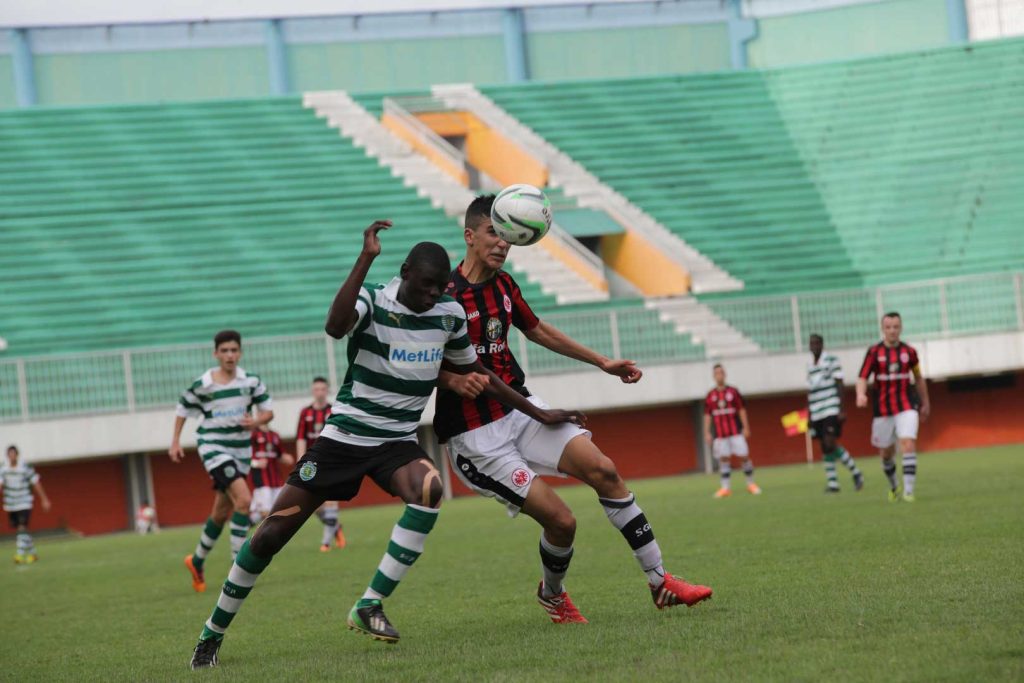
Helping your child with priming
Special recommendations from Ertheo
In part 2, the authors of Peak Performance discuss the importance of priming – optimizing your routine to prepare yourself to perform your best. Priming can be very helpful for young athletes because they have less experience competing and can be more prone to nervousness than experienced athletes.
One of the best things you can do as a parent then explains to your child the concept of priming and help them establish a priming routine for important matches and competitions.
A great way to inspire your child to follow a priming routine is by having them watch and copy their idols. Many famous athletes have priming routines, and we often see parts of their routine when we watch their matches. They often listen to music, do some sort of stretch, or organize their equipment a certain way before their matches as a way to prime themselves.
Although copying idols is a good place to start, it’s still a good idea to follow some general guidelines about priming like how to prime for team sports vs. individual sports, how to design the routine, or how long before the competition the routine should start. In this section, we’ll give you some tips to help your child create a priming routine so you can be sure they’ll perform their best at competitions. But first, we’ll discuss the difference between priming for team sports and individual sports.
Team sports vs. individual sports
If your child plays an individual sport like tennis, golf, swimming, or track and field, they’ll have more freedom to prime themselves. In individual sports, athletes don’t have to worry about balancing their own routine with the team’s routine. As long as they also complete the warm-up their coach assigns, they should have time to prime themselves however they’d like.
In team sports, there are more factors at play, and the athletes’ individual performances, as well as the team’s performance as a whole, can impact the outcome. Team priming routines can help them work together and gain rhythm as a cohesive unit. They can help all team members remember what (or who) they’re playing for.
If your child plays a team sport, they should have both an individual priming routine and a priming routine that the team practices together to set them up for their best performance as a team. As a parent, you could try to find out what kind of priming routines your child’s team does. Ask your child how the team usually prepares for a match or pay extra attention during their team’s pre-game warm-up.
Unfortunately, if your child’s team doesn’t have any kind of team priming routine, there’s not much you can do. Depending on your relationship with your child’s coach, you could try to open up the discussion by mentioning the book you’re reading about peak performance. Or, you can have your child talk to their coach about the possibility of implementing some priming into their warm-up.
You could also use what you’ve learned about priming to determine whether or not your child is getting the right training as we discussed earlier. If their team has no priming routine, it might be an indication that you need to look for better training elsewhere.
In the end, you might not be able to influence your child’s team’s priming routine, but you can certainly help them create a personal routine.
Different kinds of priming routines
Priming routines almost always contain both a mental and a physical component. For physical preparation, they usually include sport-specific stretches and warm-ups. Mental preparation, on the other hand, can vary greatly based on the athlete, their unique challenges, and the sport in question.
The main objectives of mental priming are limiting distractions, increasing focus, and regulating emotions so they can benefit the athlete rather than distract them or hold them back. That’s why appropriate mental priming routines can vary so much from athlete to athlete.
Some athletes get really nervous before competitions and need more relaxing priming routines so they can regulate their nerves and stay focused. Other athletes don’t really feel nervous at all and need routines that motivate them and awaken their competitive energy.
Many athletes listen to music as a part of their priming routine. Because there are so many different genres and moods, music can be a great idea for all kinds of athletes. Extra nervous athletes might find that calming, meditative music can help them calm their nerves before a match while more relaxed athletes might prefer rap, rock, or electronic music to help them get ready.
Other athletes find that focusing their attention on fun, relaxing, social activities before a game or match can help them get in the zone later on. Rafa Nadal is known for playing Parchesi between his warm-ups and matches. He says it helps him disconnect from his phone and spend quality time with his team.
It might be a good idea to talk to your child about how they feel before their matches and competitions and then suggest some different routines based on their response. You could also talk to your child’s coach about some different options that might be suitable for them. Whatever you choose, they’ll probably have to try some different options before settling on a routine that puts them in an ideal state of mind.
Routines and superstitions
Authors Stulberg and Magness also discuss the relationship between routines and superstitions. Priming routines often turn into superstitions where athletes begin to believe that certain insignificant actions they do before a match can lead to a win or a loss. Some athletes always wear the same socks for performances or insist on chewing a specific flavor of gum before a match.
These superstitions might seem silly, but they can actually help players get into the zone more quickly. If you notice your child developing these kinds of superstitious beliefs, it’s a good idea to encourage them. They’re actually setting up their own priming routines.
When to start the routine
Priming routines can vary greatly from athlete to athletes, but there are some common factors among routines, and one of them is when these routines should start.
It’s a good idea for your child to start their routines the night before a match. Eating the same nutritious dinner before match days is a good way to have them start preparing for the competition. It’s also great to start the day before by setting bedtime to make sure they’re getting enough sleep for their match.
On the day of the match, there are many different priming exercises your child can do. The authors talk about the importance of saving brain power so athletes can focus 100% of their attention on their match. They talk about how athletes should automatize their routine so they don’t have to waste brainpower on small decisions like what to eat or what to wear.
Your child can automatize many decisions they would typically have to make on game days to save their mental energy. They can choose to wear the same clothes, eat the same foods, talk to the same few people, etc. Anything they can do to automatize their matchday routine is a good way to prime them for success.
Then, anywhere between 60 and 120 minutes before the event, your child can begin their actual priming routine designed to physically and mentally prepare them for competition.
Part 3: Purpose
The last part of the book is about how purpose, when greater than personal goals, can help athletes achieve much more than they ever imagined possible.
Stulberg and Magness not only provide numerous examples of athletes who are motivated by a larger purpose, but they also use science to explain why having a bigger purpose helps them succeed.
Here’s the idea:
If an athlete runs as fast as they can, at some point they’ll reach complete fatigue, and, physically, they won’t be able to continue. What science has shown is that this complete fatigue is actually their mind’s way of telling their muscles to stop so they can avoid harm in the long run. So when they think they physically can’t continue, they actually can. And, contrary to what they physically feel, it’s their mind that’s actually preventing them from continuing, not their body.
Consider the numerous cases where “normal” people do extraordinary things to save the ones they love like lift a car or fight a shark. When athletes give themselves a higher purpose, they can trick their brains into achieving peak performance.
And, the trick doesn’t just work for physical goals. It turns out that by setting a higher purpose, people can also trick themselves into reaching peak performance at work. When hospital cleaners changed their job description to make it clear that their purpose was to “save patients’ lives by minimizing bacterial infection at the hospital,” their performance improved dramatically.
All in all, the more motivated the athletes, the more fatigue they’ll be able to withstand. The best way for them to get motivated is by setting a purpose far greater than their own personal goals.
Finding your purpose
Not everyone naturally has a driving purpose, but it’s not so difficult to find one. These are the authors’ recommendations for finding a purpose:
- Define your core values – your fundamental beliefs and guiding principles. Some examples include achievement, commitment, community, religion, creativity, education, reputation, motivation, courage, inspiration, relationships, etc. Choose three to five.
- Try to make a personal statement with them. If your values are education, community, inspiration, and achievement, you might consider that by achieving your goals you can inspire your community to achieve theirs.
- Write one sentence where you clearly state your purpose which is supported by your main values. “I am motivated to become the absolute best I can be in football so that I can serve as an inspiration and help other children achieving their dreams as well.”
- Write the phrase, print it out, and put it in places where you’ll see it daily especially before training or matches. That way you’ll constantly be reminded of why you’re working as hard as you are.
- Finally, every night before you go to sleep, try to evaluate how well you have lived your life according to your purpose. You can even keep a journal about it. The more you think about your purpose, the more you’ll start to internalize it and make it your reality.
Even for athletes who already know their purpose, it’s a good idea for them to follow the steps above to work on internalizing their purpose.
At the end of the day, athletes need to be able to trick their minds into letting their bodies do extraordinary things. That’s how finding a purpose can help athletes achieve peak performance.
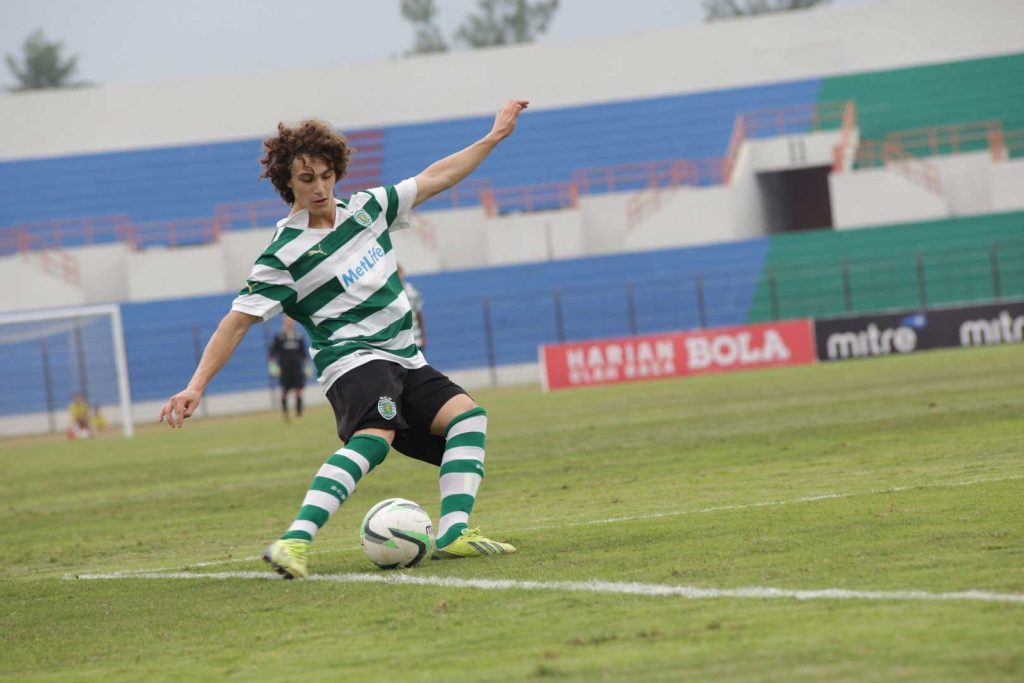
Helping your child find a purpose
Special recommendations from Ertheo
Many children dream about going pro, winning an Olympic medal, or playing for a certain team. While these are great long-term goals, they really don’t say anything about purpose. Your child might want to win an Olympic medal, but why?
It’s been proven that purpose, not just long-term goals, goes a long way to help athletes achieve peak performance. One of the main reasons is because having a greater purpose helps them continue when they want to quit.
Parents are often faced with the difficult dilemma of finding a balance between pushing their children too hard and letting them quit too easily. If you push them too hard, they’ll lose internal motivation. If you let them quit, they might resent you later on.
Purpose can really help with this dilemma. It’ll help them find the extra motivation they need to succeed from within, so you won’t have to motivate them to continue fighting for their dream.
Fortunately, as a parent, you can do a lot to help your child find their purpose. Start by asking them why they want to go pro, win an Olympic medal, or play for a certain team. Ask them what they plan to do when they get there. Maybe they’ve never even thought about it before.
A little thought about purpose can go a long way to helping them achieve their goals.
How purpose can help limit distractions
Distractions are some of the biggest obstacles for young athletes with big dreams. As children enter their teenage years, they suddenly have to fight a multitude of new distractions that can keep them from achieving their goals.
Distractions can be anything from social events, additional extracurricular activities, parties, friends, new love interests, etc. Some distractions can be good to your child as a way to help them relax and keep them from burning out. Going to social events or spending time with other goal-oriented and consciousness children is a great way for them to relax and recharge their batteries so they can continue to train at a high level.
Other distractions like the drama between friends or new love interests can take up too much time or mental energy that your child should be dedicated to achieving their goals. The problem is that many of these negative distractions are part of being a normal teenager, which makes it difficult to tell your child not to get involved with certain friends or pursue their love interests. Often times, children end up quitting their sport because they’d rather enjoy these distractions than limit themselves.
One of the best ways to limit negative distractions for your child is by sending them to a school or academy where they’d be surrounded by other children with similar goals. At high-performance sports academies, all students share a common mission and support each other. Children at high-performance academies never feel like they’re missing out on normal teenage life. To them, the only normal thing to do is fight for your goals.
Establishing a purpose can be another great way to make sure your child doesn’t give in to the distractions that can keep them from achieving their goals. When they’re faced with a distraction, and they have to decide whether being a normal teenager is more important than their goals, they’ll remember their purpose and hopefully choose to continuing fighting for their dream.
Finding a purpose for team sports
Finding a purpose for team sports can actually be easier than finding a purpose for individual sports. In team sports, many players’ purpose is playing for their teammates. They don’t want to let their teammates down by not playing their best.
Playing for teammates has been proven to work. Many teams play their best when they’re playing specifically for an injured player or a player going through a hard time. That’s why team bonding can be so beneficial. When players form connections with their teammates, they often establish a higher purpose to play well for them.
It’s a good idea to encourage your child to make friendships and connections with their teammates. That way they’ll feel more motivated to give it their all for their friends during competitions.
That being said, playing for their teammates isn’t the only purpose they should establish. To rise to the top, they’ll probably have to change teams and coaches a number of times, so they’ll have to find a more personal purpose as well.
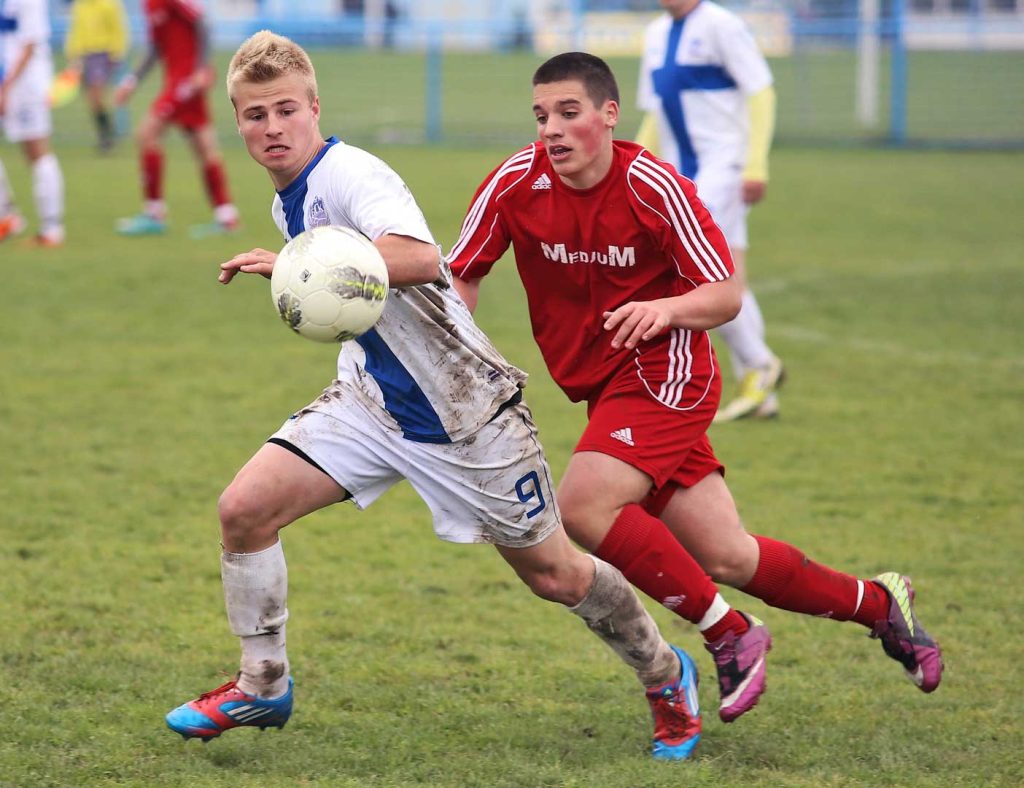
Conclusion
Peak Performance is about all the factors that affect an athlete’s ability to reach their full potential.
As a parent, you can have a great impact on your child’s success. On one hand, you can teach your child what it takes to be successful. On the other hand, you can set them up for success by finding the right training to support their goals.
According to Peak Performance, here’s the most important information you can share with your child to teach them how to be successful:
- The importance of rest and relaxation for growth
- Why how they practice is more important than how much they practice
- How to make the most out of every practice by setting the right goals
- The importance of full focus and limiting distractions
- How they can use priming to prepare themselves for competitions
- Why setting a purpose can be the difference between success and failure
- How to find their purpose
Here are some of the many ways you can set your child up for success:
- Find coaches who have the knowledge and connections to help them rise to the top
- Find them high-level training where they’re not the best in their league
- Send them to high-performance academies where they go to school with other students who share their mission. Contact us for more information.
- Help them set up a priming routine
- Help them find their purpose
We hope that what you’ve learned in this book summary will help you as you to continue to support your child’s dreams.

